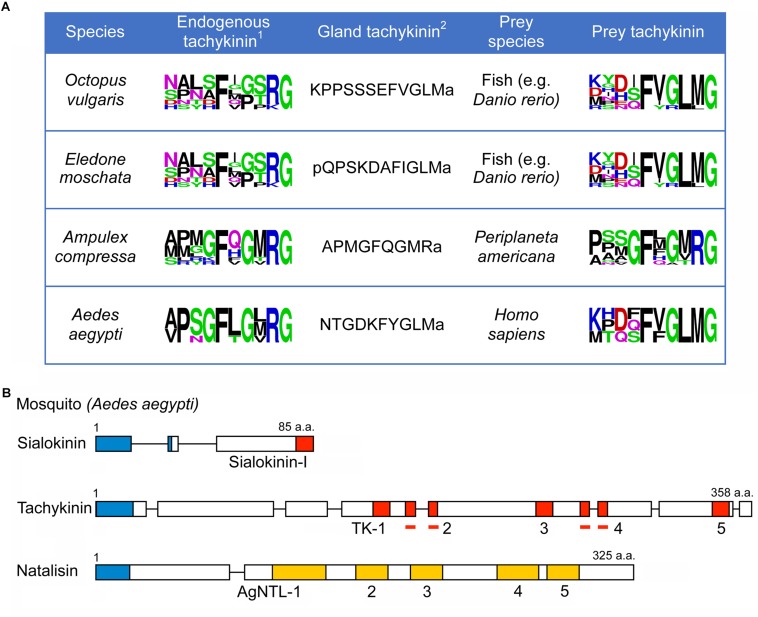FIGURE 2.
Tachykinins produced by glands utilized on prey animals. (A) Sequences of TKs produced by salivary- or venom glands of cephalopods (O. vulgaris and E. moschata) a wasp (A. compressa) and a mosquito (A. aegypti) compared to the endogenous TKs and TKs of prey animals (shown as SeqLogos). We use the zebrafish D. rerio as an example for the possible cephalopod prey1. The endogenous TK of E. moschata is not known; that of O. vulgaris is shown instead2. Only one sequence is shown. (B) Scheme of organization of tachykinin precursors and a natalisin precursor of A. aegypti. The salivary gland TK is designated sialokinin-I. Red boxes represent tachykinins, and yellow boxes indicate natalisins. In addition, signal peptides are indicated by blue boxes. Bars indicate tachykinins (TK-2 and TK-4) that are part of multiple exons.

